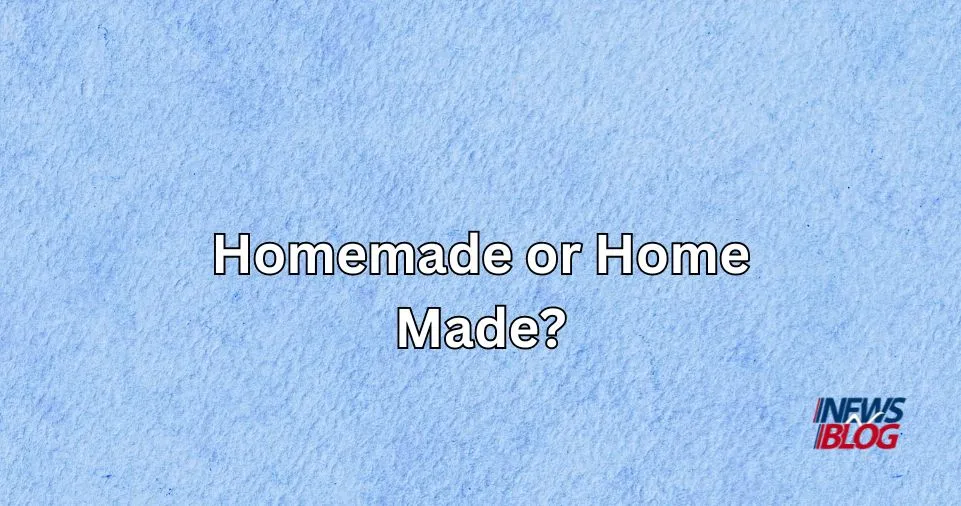When it comes to creating things at home, you might encounter two similar terms: “homemade” and “home-made.”
But are they the same?
This quick guide will help you understand the subtle yet important difference between these terms.
So, let’s dive into the world of homemade creations and explore the distinctions between “homemade” and “home-made.”
Single Word or Hyphenated Form
One of the main questions is whether “homemade” should be written as one word or with a hyphen. The answer depends on the style guide you’re following and the context in which the term is used.
In general, modern English usage leans towards the one-word form “homemade.”
This spelling is widely accepted and preferred in both American and British English, reflecting a simpler and more streamlined approach to compound words.
However, there are instances where the hyphenated version “home-made” is still appropriate, particularly when the term directly precedes the noun it describes.
This usage adheres to style guides like the AP Stylebook, which advocate for hyphenation to enhance clarity and readability in certain constructions.
UK and US Spelling Practices
In both UK and US English, the preferred spelling for the compound term is “homemade,” written as one word without any hyphens.
This spelling reflects a shared linguistic trend in both regions, emphasizing simplicity and clarity in language usage.
The term “homemade” effectively conveys the meaning of something produced or crafted at home, and this unified spelling convention enhances consistency across English-language communication.
It’s important to note that style guides, particularly the Associated Press (AP) Stylebook, may occasionally advocate for the hyphenated version “home-made” when the term directly precedes the noun it modifies.
This nuanced use of hyphens aims to improve clarity and readability in specific constructions.
Despite these distinctions, maintaining consistency in spelling throughout your writing remains paramount to effective communication in both British and American English.
Usage of “Homemade” vs. “Home-Made”
As both “homemade” and “home-made” persist in usage, writers may seek clarity on when to employ each variation. Here are dependable guidelines:
| “Homemade” | “Home-Made” |
| Adhering to AP Style guidelines. | Following Oxford Style recommendations. |
| Writing for a US readership. | Addressing a UK audience. |
| Employing the compound as a single adjective preceding a noun (e.g., “homemade cookies”). | The term is positioned after a noun (e.g., “cookies that are home-made”). |
While “homemade” may eventually prevail as the dominant spelling universally, both versions can be deemed acceptable within their appropriate contexts.
Examples
Let’s explore examples of “homemade” and “home-made” used as a noun and as an adjective:
| As an Adjective | As a Noun |
| The bakery showcased its delicious homemade pies, drawing customers with the aroma of freshly baked treats. (Adjective describing the type of pies) | The joy of the holiday season is amplified by the delightful taste of Aunt Carol’s famous homemade. (Noun referring to homemade goods in general) |
| We enjoyed a warm evening sipping on a cup of homemade hot chocolate by the fireplace. (Adjective describing the nature of the hot chocolate) | At the farmers’ market, vendors proudly displayed an array of delicious home-made. (Noun referring to various homemade food items) |
| The craft fair featured a variety of home-made crafts, each showcasing the unique talents of local artisans. (Adjective describing the crafts) | She has a knack for creating beautiful homemade, from hand-stitched quilts to personalized greeting cards. (Noun referring to a range of homemade items) |
In these examples, “homemade” functions as an adjective when describing characteristics of nouns (pies, hot chocolate, crafts), and as a noun when referring to a general category of homemade items.
The hyphenated “home-made” is used as an adjective in the context of crafts and serves as a noun when referring to a variety of homemade goods.
Conclusion
Understanding the distinction between “homemade” and “home-made” can help you choose the right form for your writing, ensuring clarity and consistency.
Whether you’re describing a delicious treat or a beautiful craft, these guidelines will help you navigate the nuances of these similar yet distinct terms.
Also Read:

